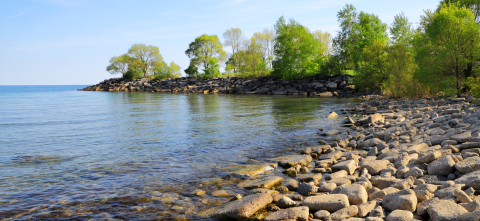
Water Alliance director Joan Rose delivers keynote at MSU advanced degree commencement
MSU Water Alliance director Joan Rose delivered the keynote address at Michigan State University’s Fall 2025 advanced degree commencement ceremony.

MSU researcher brings rapid diagnostics expertise to IJC’s Health Professionals Advisory Board
MSU professor and researcher Evangelyn Alocilja is contributing her expertise in rapid diagnostics to the International Joint Commission’s Health Professionals Advisory Board (HPAB).

Understanding PFAS
Per- and polyfluoroalkyl substances, what they are, how they affect us, where they come from, and what we can do.

Research Spotlight: What happens when you cross a worm with a robot?
MSU Professor Xiaobo Tan and his team took inspiration from worms to create robots that easily maneuver through corrugated pipes which are vital for agricultural operations.

Science ideas for young children: Wild wacky water critters
This article is part of a series on science activities about the natural world that anyone can conduct with children. Michigan State University Extension recommends this be done within a family, in a day-care setting, as part of school activities, a 4-H club or with any group working with young children.

Researchers map path forward for gender-inclusive fisheries data
A team of 36 researchers from six continents has developed a comprehensive framework to address the persistent undercounting of women in small-scale fisheries data systems.

Bowfin or faux-fin? Reeling in the truth about these look-alike fish
Learn how to ID between bowfin, burbot, and the invasive northern snakehead by spotting key differences in body shape, coloration, and fins.

Spartans Making a Difference: Safeguarding Fish and Public Health
This week’s articles by MSU faculty, specialists, and students making a difference feature hidden viruses in lake trout, health disparities in wastewater, and chemical risks in drinking water mapped by AI.

MSU-led research helps safeguard the Great Lakes from invasive grass carp through science-driven management
MSU scientists are using cutting-edge tracking technology and multi-agency collaboration to reduce grass carp threats to Great Lakes ecosystems.

Why do we care about Chara?
Below the awning of these lofty species, our underwater forest unfolds into a tapestry of small purple bladderwort, pipewort, creeping spearwort, and the ubiquitous and charismatic Chara.

Stories offer rich history of the Great Lakes’ legacy
Transportation of goods, shipwrecks, commercial and recreational fishing, all tell the tale of human connection to the water.

Spartans Making a Difference: Toward Smarter Farms and Healthier Cities
This week’s articles by MSU faculty, specialists, and students making a difference feature smarter farm technology, biodiversity in vacant lots, and new evidence linking lead in food to health risks.
